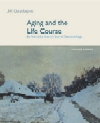1. The Administration on Aging (http://www.aoa.dhhs.gov)
provides an interesting fact sheet on work and age discrimination at its website.
Go to the site's homepage and link to AOA Fact Sheets; select and read "Age
Discrimination: A pervasive and Damaging Influence." - Give some examples of age discrimination.
- What can victims of age discrimination do to file a charge at the state
or federal level?
- According to the Bureau of Labor Statistics (BLS), about how many people
age 55 or older were unemployed in 1993?
- What happened at the Monsanto Company in St. Louis, Missouri, in 1993?
- From 1991 to 1995, how many workers per year, on average, filed age discrimination
complaints with the Equal Employment Opportunity Commission (EEOC)?
2. The National Council on Aging (http://www.ncoa.org)
is one of the nation's oldest associations dedicated to promoting the dignity,
self-determination, and well-being of older persons. Go to the council's Homepage
and link to Workforce Developments. Select and read "A & P Welcomes
a New Generation of Older Employees." - What do insurance company data show about the amount of sick leave taken
by older workers versus younger workers?
- What do the data show about the number of older workers who quit?
- Why has employment recently become more appealing to seniors?
- In what capacity will the seniors that A & P hires be trained?
3. The American Association for Retired Persons (AARP) (http://www.aarp.org)
prides itself on being one of the leading voices for addressing the needs of
Americans age 50 and older. To learn more about volunteers who are over the
age of 50, go the AARP homepage and click on "The Volunteer Experience."
Next, click on "See All Topics." Scroll down the page, and click on
the article, "The New Unretirement." Then answer the following question: - What is The Experience Corps, and what do older volunteers do?
Now click on the "Back" button, and click on the article, "Peace
Corps: Rewards for Older Volunteers." - What percentage of Peace Corps volunteers are 50 and older?
Click on the Back button one more time, and read the article, "Legacy
Awards: Volunteers Change Lives." Then answer the remaining questions: - What are the Legacy Awards?
- What are the awards criteria?
4. The Social Security Administration (http://www.ssa.gov/about.htm)
homepage provides information about social security, including a number of applicable
publications. Go to the site and click on "Benefit Publications."
Scroll down the page and click on "Retirement Benefits." Click on
the next "Retirement Benefits" link. Scroll down until you reach the
heading "What's Inside." Click on "How Much Will Your Retirement
Benefit Be?" Read that section and the next two sections, "Full Retirement"
and "Early Retirement." Answer the following questions: - On what is your social security benefit based?
- What factors affect your social security benefit?
- What is the "full retirement age?"
- What will happen to your benefits if you take an early retirement?
|



 2002 McGraw-Hill Higher Education
2002 McGraw-Hill Higher Education